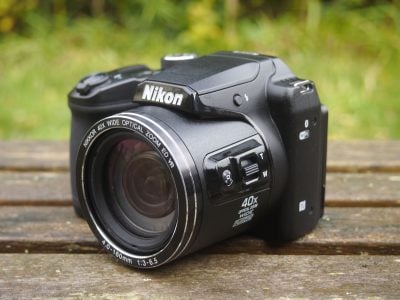Nikon COOLPIX B500 review
-
-
Written by Ken McMahon
Quality
Nikon COOLPIX B500 vs Nikon COOLPIX B700 quality
To compare real-life performance, I shot this scene with the Nikon COOLPIX B500 and the Nikon COOLPIX B700 within a few moments of each other, using their best quality JPEG settings and at their base sensitivity settings. For this test the cameras were mounted on a tripod and image stabilisation was disabled. The COOLPIX B500 was zoomed in a tad to provide the same field of view as the B700 at its 4.3mm maximum wide angle setting and the ISO sensitivity was manually set to the lowest available setting.
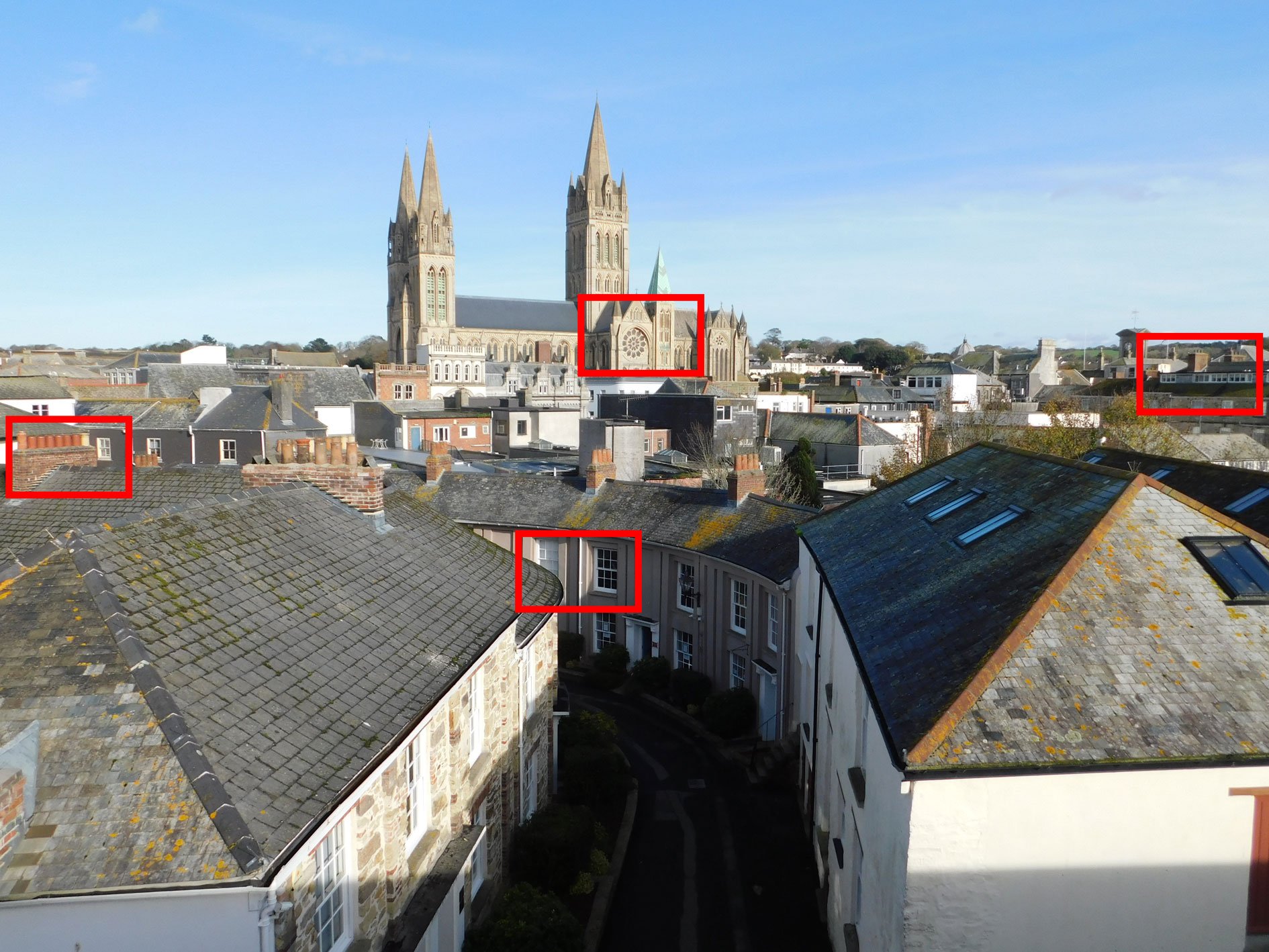
The COOLPIX B500 was set to Auto mode and selected an exposure of 1/1250 at f3.1 set to its base 125 ISO sensitivity setting. I set the COOLPIX B700 to Aperture priority mode and selected the widest available aperture which is f3.3. At its base sensitivity setting of 100 ISO the COOLPIX B700 chose a shutter speed of 1/1600.
Firstly I’ll point out that the 16 Megapixel sensor of the COOLPIX B500 produces a larger crop area with slightly smaller details than the 20 Megapixel sensor of the COOLPIX B500.
Overall, the crops from the B500 look pretty respectable. As you’d expect, the detail in the middle of the frame is sharper than at the edges, and as well as looking a little blurry, the first crop, from close to the left of the frame suffers from a bit of colour fringing. In the second crop from close to the middle of the frame things look a fair bit sharper and the same goes for crop number three, although the B500 has overexposed just a tad, so there’s not as much detail in this crop as you might expect. The final crop from close to the right edge of the frame is again less sharp than in the middle, but you can make oput the time on the clock. What’s slightly more concerning is the level of noise, there’s clearly visible noise texture in this crop, even at the COOLPIX B500’s base 125 ISO sensitivity setting.
Compared with the crops from the COOLPIX B700, the B500 stands up pretty well. The first crop from the B700 is a little sharper and, though there is some colour fringing, it’s blue, rather than red and not so visible. Overall the COOLPIX B700 crops are a little more contrasty and that makes them look a bit sharper, but I reckon there’s also more detail being delivered by B700’s lens and sensor combination.
Scroll down to see more quality comparisons with the lens zoomed in. Or to find out how they compare at higher sensitivities head for my Nikon COOLPIX B500 noise results, skip to my Nikon COOLPIX B500 sample images, or head straight to my verdict.

Above left: Nikon COOLPIX B500 JPEG at f3.1, 125 ISO. Above right: Nikon COOLPIX B700 JPEG f3.3, 100 ISO.

Above left: Nikon COOLPIX B500 JPEG at f3.1, 125 ISO. Above right: Nikon COOLPIX B700 JPEG f3.3, 100 ISO.

Above left: Nikon COOLPIX B500 JPEG at f3.1, 125 ISO. Above right: Nikon COOLPIX B700 JPEG f3.3, 100 ISO.

Above left: Nikon COOLPIX B500 JPEG at f3.1, 125 ISO. Above right: Nikon COOLPIX B700 JPEG f3.3, 100 ISO.
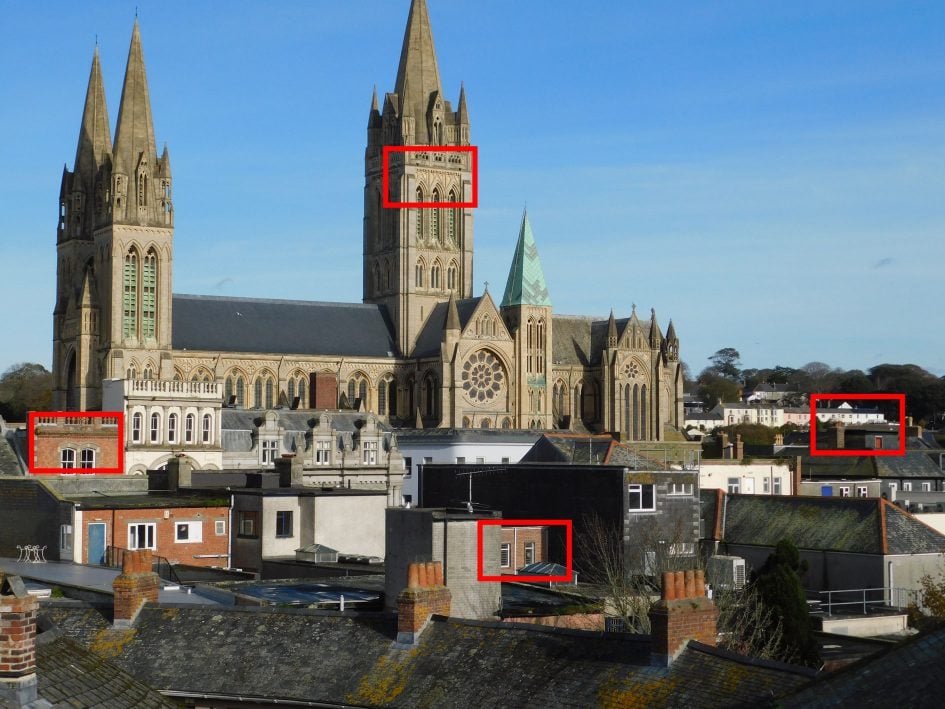
For this next test I zoomed both cameras in to roughly 60mm equivalent. As before the crops below are taken from the areas marked in red above. Interestingly, there’s the same slight quality difference in the first crop from the edge of the frame. The COOLPIX B500 crop is a little less sharp and has some colour fringing, but the edge definition is a little better at this focal length. The exposure is also better here, which means we can make a more meaningful comparison between the crops in the middle of the frame. The COOLPIX B500 crops look a little softer and less contrasty, and it still looks to me like there’s just a smidgeon more detail in those from the B700. Scroll down to see more quality comparisons with the lens zoomed further. Or to find out how they compare at higher sensitivities scroll down for my Nikon COOLPIX B500 noise results, skip to my Nikon COOLPIX B500 sample images, or head straight to my verdict.

Above left: Nikon COOLPIX B500 JPEG at f4, 125 ISO. Nikon COOLPIX B700 JPEG at f4.2, 100 ISO.

Above left: Nikon COOLPIX B500 JPEG at f4, 125 ISO. Nikon COOLPIX B700 JPEG at f4.2, 100 ISO.

Above left: Nikon COOLPIX B500 JPEG at f4, 125 ISO. Nikon COOLPIX B700 JPEG at f4.2, 100 ISO.

Above left: Nikon COOLPIX B500 JPEG at f4, 125 ISO. Nikon COOLPIX B700 JPEG at f4.2, 100 ISO.
Nikon COOLPIX B500 quality at 900mm equivalent
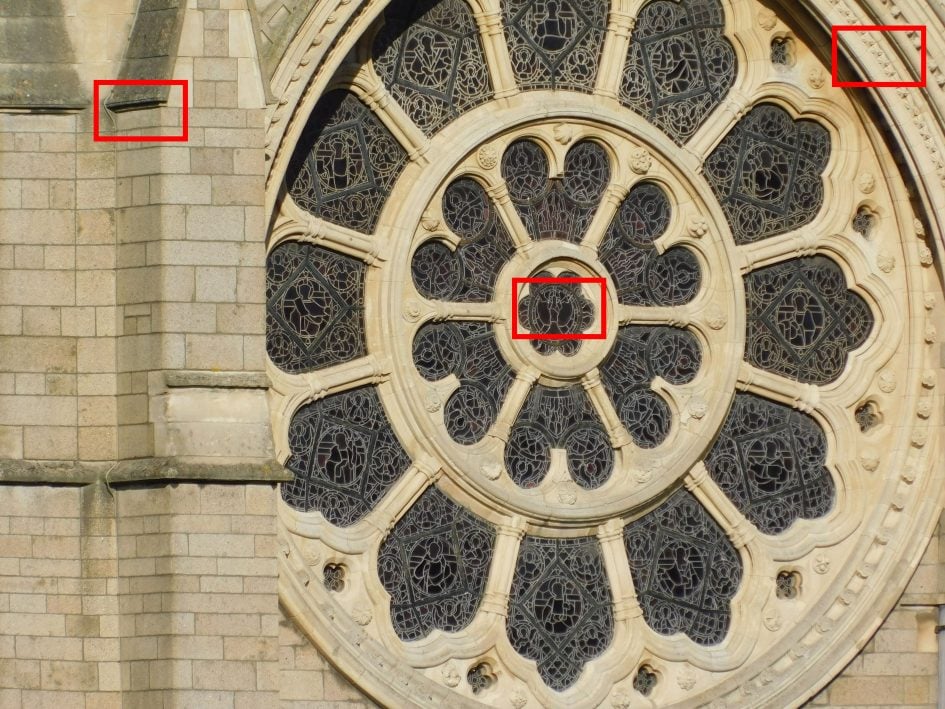
For this final comparison I zoomed the COOLPIX B500 to its maximum 900mm equivalent focal length and zoomed the COOLPIX B700 to match it. This is still well short of the COOLPIX B700’s maximum 1440mm equivalent focal length. Here I’ve taken just three crops from the areas marked in red above. Though the first crop doesn’t really bear it out, I think the final two support what the earlier tests hinted at – the COOLPIX B500’s lens and sensor combination produces slightly sharper and more contrasty JEPGs with a little more detail then the COOLPIX B500. Next, find out how they compare at higher sensitivities scroll down for my Nikon COOLPIX B500 noise results, skip to my Nikon COOLPIX B500 sample images, or head straight to my verdict.

Above left: Nikon B500 JPEG at f6.5, 125 ISO. Above right: Nikon B700 JPEG at f5.6, 100 ISO.

Above left: Nikon B500 JPEG at f6.5, 125 ISO. Above right: Nikon B700 JPEG at f5.6, 100 ISO.

Above left: Nikon B500 JPEG at f6.5, 125 ISO. Above right: Nikon B700 JPEG at f5.6, 100 ISO.
Nikon COOLPIX B500 vs Nikon COOLPIX B700 noise results
To compare noise levels under real-life conditions, I shot this scene with the Nikon COOLPIX B500 and the Nikon COOLPIX B700 within a few moments of each other at each of their ISO settings. The cameras were set to their best quality JPEG modes and mounted on a tripod and stabilisation was disabled.
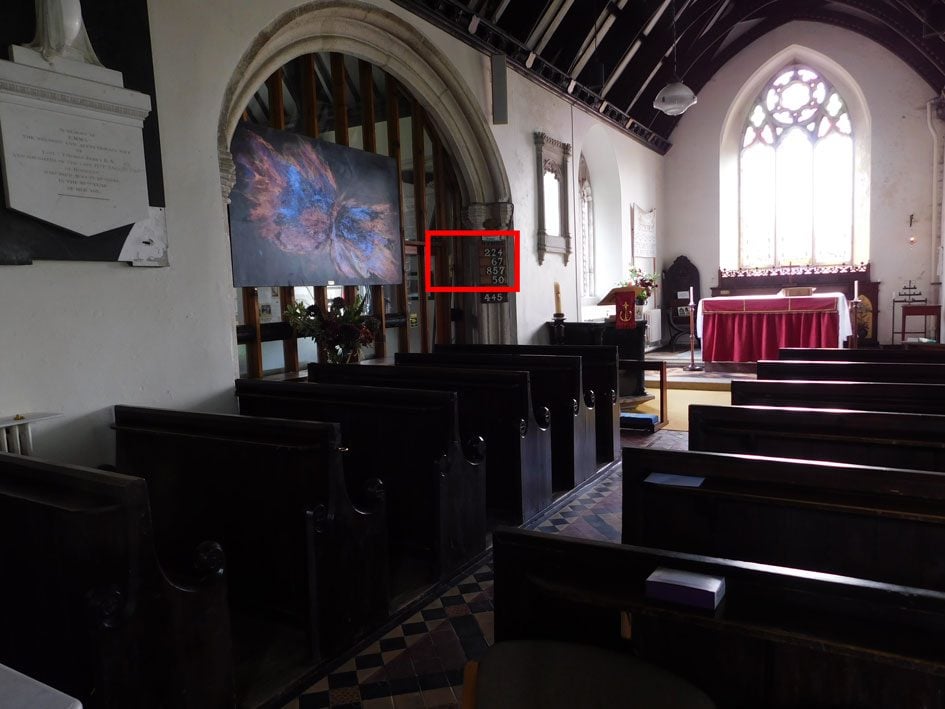
The cameras were zoomed in to provide the same field of view and the ISO sensitivity was manually set to the lowest available setting. The COOLPIX B500 was set to Auto mode and selected an exposure of 1s at f3.1 set to its base 125 ISO senstitivity setting. I set the COOLPIX B700 to Aperture priority mode and selected the widest available aperture which is f3.3. At its base sensitivity setting of 100 ISO the COOLPIX B700 chose a shutter speed of 1.3s
If you’ve looked at my outdoor quality test results you’ll know that I was a bit concerned about the amount of noise visible on the COOLPIX B500’s crops at its base 125 ISO sensitivity setting and the first crop below bears that out. You can see a fair bit of texture in this crop particularly in the white label at the top.
Equally worrying is that the noise level increases significantly in the step up to 200 ISO and again by a similar amount when the sensitivity raises to 400 ISO. It’s worth pointing out that, while the noise is very noticeable in these 100 percent crops, you’d have to look very hard to spot it at smaller sizes. So it’s only if you’re making big prints or viewing on a large high resolution display that it becomes an issue.
So, not a sparkling performance from the COOLPIX B500 at the lower sensitivity settings and as you progress up the sensitivity scale things don’t get a lot better, the 800 ISO crop looks smeary in places and 1600 ISO is a bit clumpy. The 3200 and 6400 ISO settings are no better or worse than you’ll find on most compacts, and undeniably handy for low light and when you need a fast shutter speed to avoid camera shake when zoomed in.
The COOLPIX B700 packs 25 percent more pixels onto its 20 Megapixel sensor, so you might expect it to produce more noise but in actual fact the B700 crops look cleaner, at least at the lower sensitivity settings. At 400 ISO it loses its advantage though and from 800 ISO up it’s the COOLPIX B500 that wins the noise battle.

Above left: Nikon COOLPIX B500 JPEG at 125 ISO. Above right: Nikon COOLPIX B700 JPEG at 100 ISO.

Above left: Nikon COOLPIX B500 JPEG at 200 ISO. Above right: Nikon COOLPIX B700 JPEG at 200 ISO.

Above left: Nikon COOLPIX B500 JPEG at 400 ISO. Above right: Nikon COOLPIX B700 JPEG at 400 ISO.

Above left: Nikon COOLPIX B500 JPEG at 800 ISO. Above right: Nikon COOLPIX B700 JPEG at 800 ISO.

Above left: Nikon COOLPIX B500 JPEG at 1600 ISO. Above right: Nikon COOLPIX B700 JPEG at 1600 ISO.

Above left: Nikon COOLPIX B500 JPEG at 3200 ISO. Above right: Nikon COOLPIX B700 JPEG at 3200 ISO.

Above left: Nikon COOLPIX B500 JPEG at 6400 ISO. Above right: Nikon COOLPIX B700 JPEG 6400 ISO not available.
Check prices at Amazon, B&H, Adorama, eBay or Wex. Alternatively get yourself a copy of my In Camera book, an official Cameralabs T-shirt or mug, or treat me to a coffee! Thanks!




